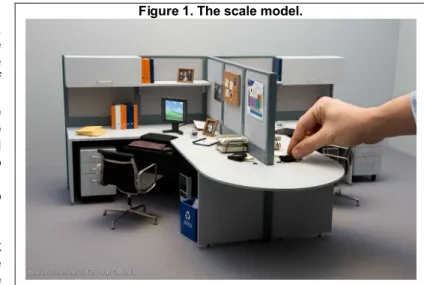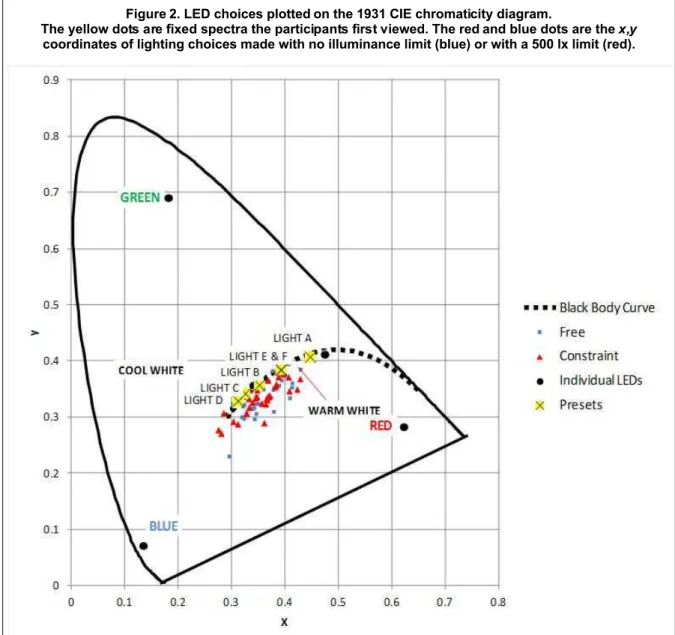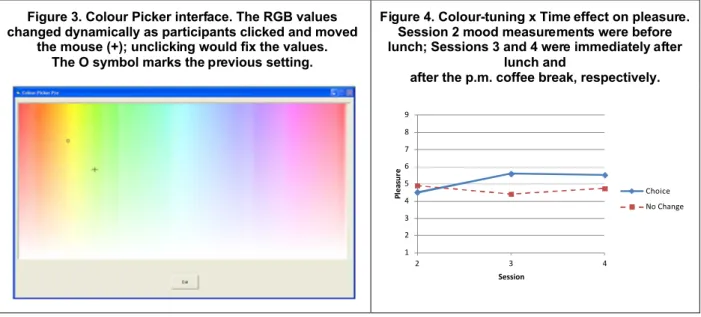Publisher’s version / Version de l'éditeur:
Light Design and Application: LD + A, 44, 10, pp. 52-54, 2014-10-01
READ THESE TERMS AND CONDITIONS CAREFULLY BEFORE USING THIS WEBSITE. https://nrc-publications.canada.ca/eng/copyright
Vous avez des questions? Nous pouvons vous aider. Pour communiquer directement avec un auteur, consultez la première page de la revue dans laquelle son article a été publié afin de trouver ses coordonnées. Si vous n’arrivez pas à les repérer, communiquez avec nous à PublicationsArchive-ArchivesPublications@nrc-cnrc.gc.ca.
Questions? Contact the NRC Publications Archive team at
PublicationsArchive-ArchivesPublications@nrc-cnrc.gc.ca. If you wish to email the authors directly, please see the first page of the publication for their contact information.
NRC Publications Archive
Archives des publications du CNRC
This publication could be one of several versions: author’s original, accepted manuscript or the publisher’s version. / La version de cette publication peut être l’une des suivantes : la version prépublication de l’auteur, la version acceptée du manuscrit ou la version de l’éditeur.
Access and use of this website and the material on it are subject to the Terms and Conditions set forth at
The power of one: personal color tuning in office lighting is where the
industry could be headed
Veitch, J. A.
https://publications-cnrc.canada.ca/fra/droits
L’accès à ce site Web et l’utilisation de son contenu sont assujettis aux conditions présentées dans le site LISEZ CES CONDITIONS ATTENTIVEMENT AVANT D’UTILISER CE SITE WEB.
NRC Publications Record / Notice d'Archives des publications de CNRC:
https://nrc-publications.canada.ca/eng/view/object/?id=cb18cc3c-16a6-4b95-938a-4020b5d8021a https://publications-cnrc.canada.ca/fra/voir/objet/?id=cb18cc3c-16a6-4b95-938a-4020b5d8021aOriginally published as: Veitch, J. A. (2014, October). The power of one. Lighting Design + Application, 44(10), pp. 52-54. The Power of One
Personal control over colour tuning is where the industry could be headed
Jennifer A. Veitch NRC Construction
jennifer.veitch@nrc-cnrc.gc.ca
Everyone involved with the lighting industry agrees that this is a time of rapid change, with new
technologies both for light sources and controls poised to deliver previously unimaginable lighting energy savings. Energy savings, of course, are not the whole picture: the new technologies also allow us to achieve lighting effects that were previously impractical, and some of them promise to improve lighting quality and quality of life.
One of these effects is colour-tunable light. By using a combination of light-emitting diodes (LEDs) with varying colour outputs together with a luminaire design to mix the outputs and controls to dim each LED separately, one can choose the spectrum of the light to which one is exposed.
Over 15 years of laboratory and field research at NRC has demonstrated that individual control over workplace light level delivers benefits for the environment, individuals, and employers. (Long-time readers might recall that I wrote about this for LD+A in December, 2010 [1]). On average, individual control over light level reduces energy use by ~10% over the typical fixed light level provided, because although some people desire a higher level, many others choose a lower level [2, 3]. Obtaining one’s preferred light level improves the individual’s mood, which in turn contributes to better well-being and increased work focus [4]. The employer benefits in two ways: reduced energy costs and reduced human resources costs in the form of improved retention and reduced health problems for employees [5]. We believe that individual colour tuning has the potential to add further to these benefits.
Stage 1: Scale Model Experiment
We started experimental work with a scale model experiment to prove the concept [6]. Figure 1 shows the scale model, which was a realistic 1:6 model of an open-plan office. Participants viewed a set of five pre-set LED spectra and one fluorescent lamp, and judged the appearance of the model; then they had the opportunity to modify the lighting to choose their personal preferences. In this case they had five LED channels to independently vary: red, green, blue, warm white and cool white. As predicted, people chose a wide range of different spectra (Figure 2). We can express the central tendency as an average (the median correlated colour temperature
[CCT] was ~ 4300 K), but as is clear from this chart, individuals differ widely from one another.
Figure 2. LED choices plotted on the 1931 CIE chromaticity diagram.
The yellow dots are fixed spectra the participants first viewed. The red and blue dots are the x,y coordinates of lighting choices made with no illuminance limit (blue) or with a 500 lx limit (red).
Stage 2: Office Simulation Experiment
Next, we shifted to full scale. When we began this work there were no commercially-available luminaires for general office lighting that offered the range of colour-tuning capabilities we needed for this experiment. We designed our own, and created a custom interface to allow individuals to choose a colour by moving a cursor over a colour chart (Figure 3). Participants in this experiment worked under a fixed spectrum of our choosing during the morning (a CCT of either 3000 K [warm white) or 6500 K [cool white]); half continued in the afternoon with this same condition, and half had the opportunity to choose their own spectrum with the colour picker. Those who worked under the fixed condition all day used the colour picker once, at the end of the day, to choose a preferred spectrum.
The results from this simulated office setting showed, again, a wide range of preferred light spectra. Importantly, they also showed that when people were given the opportunity after lunch to choose their own spectra, their mood improved, a statistically significant (if small) improvement that remained stable for the remainder of the day (Figure 4). The people who had colour-tuning all afternoon used it frequently
– far more frequently than people use light level controls in similar experiments – and it seemed from this and from their comments to us that the novelty of the system was a factor. Most people are unfamiliar with the concept of varying tints of white light as well as with the concept of individual choice in the matter. Whereas people may know through experience what light levels they prefer, they lack the experience to immediately hone in on their preferred light spectra. We also found, with drilling into our data, that this interface design was not the ideal choice for delivering subtly-different lighting conditions. Overall, the work on colour-tuning tells us that we are on the right track. There is a broad range of individual preferences for light source spectra, and it appears that being able to obtain this preference leads to a more pleasant mood. With more familiarity with these concepts, and with an interface that can more easily deliver the preferred conditions, we expect to demonstrate the value to individuals and their employers of this novel feature.
The Future of Lighting
Our previous work on individual light level control led us to study individual colour-tuning, but of course such a system could also be used to deliver spectrum and intensity changes on a predetermined schedule. With better knowledge of the various circadian and alerting effects of light, by day and overnight, we could tailor light exposures to deliver a light dose suited to the individual – and we could do so while still conserving energy. The market today includes products that could, in principle, be used to that end. Conservative researchers (including me) will say that we have a lot to learn about photobiology and behaviour before making claims for specific algorithms; but we all will say that this is a very exciting time to be in lighting.
Acknowledgements
This work was co-led by Dr. E. Erhan Dikel. The work was sponsored financially by Natural Resources Canada (through the EcoEnergy Technology and Innovation Fund, Housing, Buildings and Community Systems Directorate, and Office of Energy Efficiency), British Columbia Hydro, and the National Research Council of Canada. In-kind support was provided by Philips (Color Kinetics, Canlyte and Lightolier), Lutron, Go Lighting, Group IV Semiconductor, and Public Works and Government Services Canada.
References
1. Veitch, J.A., Research matters - Lighting and organizational productivity, in Lighting Design + Application, 2010. p. 26-28, 30.
2. Galasiu, A.D., et al., Energy saving lighting control systems for open-plan offices: a field study. Leukos, 2007. 4(1): p. 7-29.
Figure 3. Colour Picker interface. The RGB values changed dynamically as participants clicked and moved
the mouse (+); unclicking would fix the values. The Ο symbol marks the previous setting.
Figure 4. Colour-tuning x Time effect on pleasure. Session 2 mood measurements were before lunch; Sessions 3 and 4 were immediately after
lunch and
after the p.m. coffee break, respectively.
1 2 3 4 5 6 7 8 9 2 3 4 Pl ea su re Session Choice No Change
3. Newsham, G.R. and J.A. Veitch, Individual control over office lighting: Perceptions, choices, and energy
savings, in Construction Technology Update1998, NRC Institute for Research in Construction: Ottawa, ON.
4. Veitch, J.A., M.G.M. Stokkermans, and G.R. Newsham, Linking lighting appraisals to work behaviors. Environment and Behavior, 2013. 45(2): p. 198-214.
5. Veitch, J.A., et al., Lighting and office renovation effects on employee and organizational well-being, 2010, NRC Institute for Research in Construction: Ottawa, ON.
6. Dikel, E.E., et al., Preferred chromaticity of color-tunable LED lighting. Leukos, 2014. 10(2): p. 101-115.
About the author: Jennifer A. Veitch, PhD, Fellow IESNA, is a principal research officer at the National Research Council Canada (NRC). She's best known for her research on lighting quality, individual controls, and environmental and job satisfaction in open-plan offices. She is active in several professional associations and committees. She serves on the IES Lighting Criteria Committee and Board of Fellows and is an Associate Editor of Leukos.


